Hydrogen Cars
입력 2016.06.21 (14:32)
수정 2016.06.21 (15:05)
읽어주기 기능은 크롬기반의
브라우저에서만 사용하실 수 있습니다.
[Anchor Lead]
Hydrogen fuel cell vehicles are being hailed as a environment-friendly option in the future. In a recent demonstration the vehicles appear to be able to filter fine dust from the air. Let's take a look.
[Pkg]
This is a hydrogen-powered version of the Tucson developed by Hyundai Motor Company. A balloon filled with fine dust is attached to the front air intake scoop, and an empty one at the back. The rear balloon begins to expand, as the air mixed with fine dust flows from front to back. Even to the naked eye, the air in the rear balloon appears clean. The fine dust is removed in order to generate electricity through a reaction between pure oxygen and hydrogen. The test shows that the particle reduction effect is even greater than expected.
[Soundbite] Kim Se-hun(Fuel Cell Development, Hyundai Motor) : "The stack which generates electricity and water contains a membrane through which air must pass to react with the catalyst. That membrane can filter out fine dust measuring just 0.1 micrometers wide."
A hydrogen car sucks in 20 mg of fine dust for every kilometer it runs. Since a diesel car emits 10 mg of fine dust every kilometer, one hydrogen car effectively removes the fine dust discharged by two diesel vehicles. The South Korean government plans to increase the number of hydrogen vehicles on the roads to 10,000 units by 2020. However, a lack of hydrogen recharging facilities means that more government investment appears necessary in developing the infrastructure.
Hydrogen fuel cell vehicles are being hailed as a environment-friendly option in the future. In a recent demonstration the vehicles appear to be able to filter fine dust from the air. Let's take a look.
[Pkg]
This is a hydrogen-powered version of the Tucson developed by Hyundai Motor Company. A balloon filled with fine dust is attached to the front air intake scoop, and an empty one at the back. The rear balloon begins to expand, as the air mixed with fine dust flows from front to back. Even to the naked eye, the air in the rear balloon appears clean. The fine dust is removed in order to generate electricity through a reaction between pure oxygen and hydrogen. The test shows that the particle reduction effect is even greater than expected.
[Soundbite] Kim Se-hun(Fuel Cell Development, Hyundai Motor) : "The stack which generates electricity and water contains a membrane through which air must pass to react with the catalyst. That membrane can filter out fine dust measuring just 0.1 micrometers wide."
A hydrogen car sucks in 20 mg of fine dust for every kilometer it runs. Since a diesel car emits 10 mg of fine dust every kilometer, one hydrogen car effectively removes the fine dust discharged by two diesel vehicles. The South Korean government plans to increase the number of hydrogen vehicles on the roads to 10,000 units by 2020. However, a lack of hydrogen recharging facilities means that more government investment appears necessary in developing the infrastructure.
■ 제보하기
▷ 카카오톡 : 'KBS제보' 검색, 채널 추가
▷ 전화 : 02-781-1234, 4444
▷ 이메일 : kbs1234@kbs.co.kr
▷ 유튜브, 네이버, 카카오에서도 KBS뉴스를 구독해주세요!
- Hydrogen Cars
-
- 입력 2016-06-21 14:51:03
- 수정2016-06-21 15:05:34
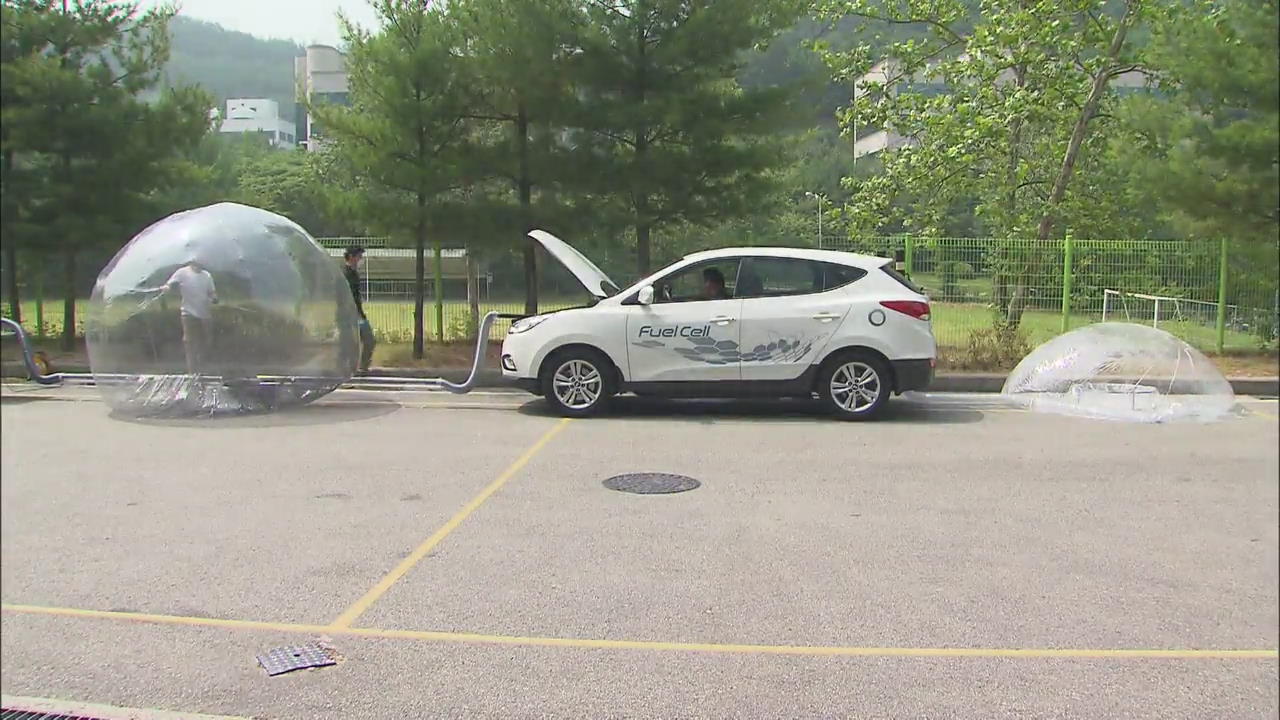
[Anchor Lead]
Hydrogen fuel cell vehicles are being hailed as a environment-friendly option in the future. In a recent demonstration the vehicles appear to be able to filter fine dust from the air. Let's take a look.
[Pkg]
This is a hydrogen-powered version of the Tucson developed by Hyundai Motor Company. A balloon filled with fine dust is attached to the front air intake scoop, and an empty one at the back. The rear balloon begins to expand, as the air mixed with fine dust flows from front to back. Even to the naked eye, the air in the rear balloon appears clean. The fine dust is removed in order to generate electricity through a reaction between pure oxygen and hydrogen. The test shows that the particle reduction effect is even greater than expected.
[Soundbite] Kim Se-hun(Fuel Cell Development, Hyundai Motor) : "The stack which generates electricity and water contains a membrane through which air must pass to react with the catalyst. That membrane can filter out fine dust measuring just 0.1 micrometers wide."
A hydrogen car sucks in 20 mg of fine dust for every kilometer it runs. Since a diesel car emits 10 mg of fine dust every kilometer, one hydrogen car effectively removes the fine dust discharged by two diesel vehicles. The South Korean government plans to increase the number of hydrogen vehicles on the roads to 10,000 units by 2020. However, a lack of hydrogen recharging facilities means that more government investment appears necessary in developing the infrastructure.
Hydrogen fuel cell vehicles are being hailed as a environment-friendly option in the future. In a recent demonstration the vehicles appear to be able to filter fine dust from the air. Let's take a look.
[Pkg]
This is a hydrogen-powered version of the Tucson developed by Hyundai Motor Company. A balloon filled with fine dust is attached to the front air intake scoop, and an empty one at the back. The rear balloon begins to expand, as the air mixed with fine dust flows from front to back. Even to the naked eye, the air in the rear balloon appears clean. The fine dust is removed in order to generate electricity through a reaction between pure oxygen and hydrogen. The test shows that the particle reduction effect is even greater than expected.
[Soundbite] Kim Se-hun(Fuel Cell Development, Hyundai Motor) : "The stack which generates electricity and water contains a membrane through which air must pass to react with the catalyst. That membrane can filter out fine dust measuring just 0.1 micrometers wide."
A hydrogen car sucks in 20 mg of fine dust for every kilometer it runs. Since a diesel car emits 10 mg of fine dust every kilometer, one hydrogen car effectively removes the fine dust discharged by two diesel vehicles. The South Korean government plans to increase the number of hydrogen vehicles on the roads to 10,000 units by 2020. However, a lack of hydrogen recharging facilities means that more government investment appears necessary in developing the infrastructure.
이 기사가 좋으셨다면
-
좋아요
0
-
응원해요
0
-
후속 원해요
0










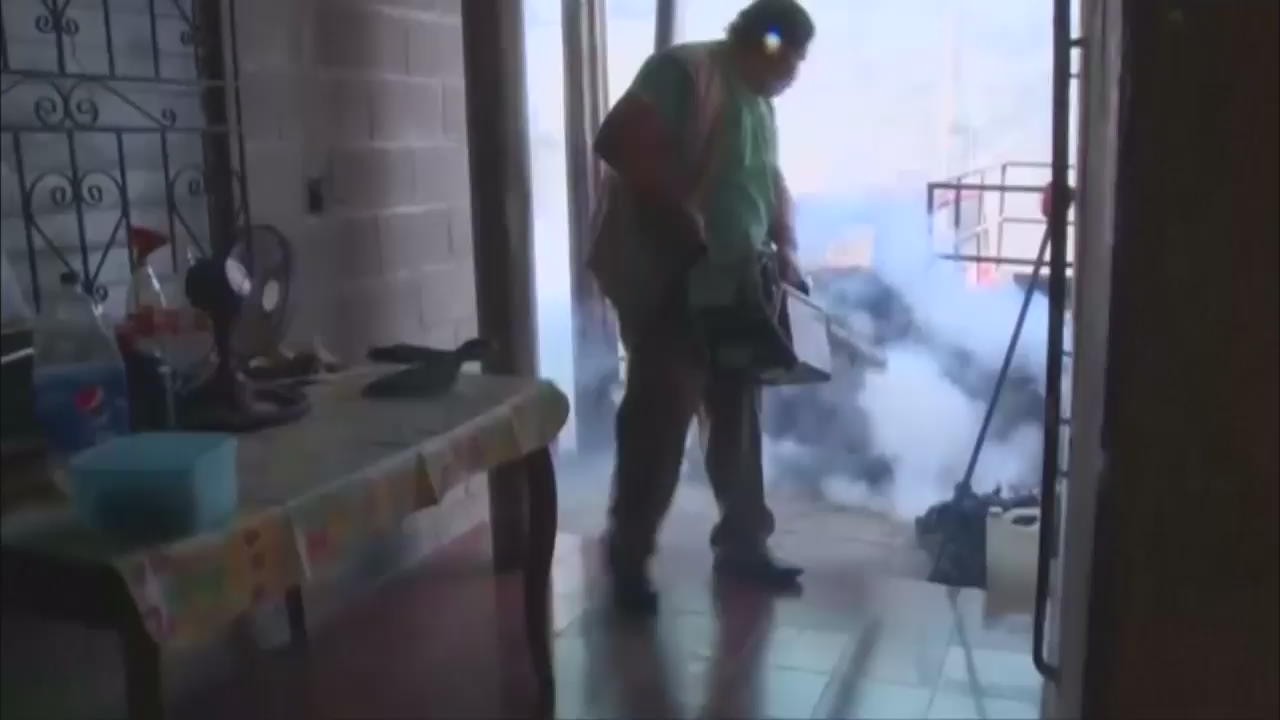

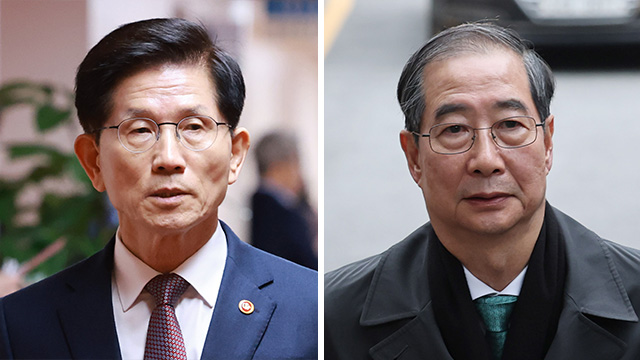
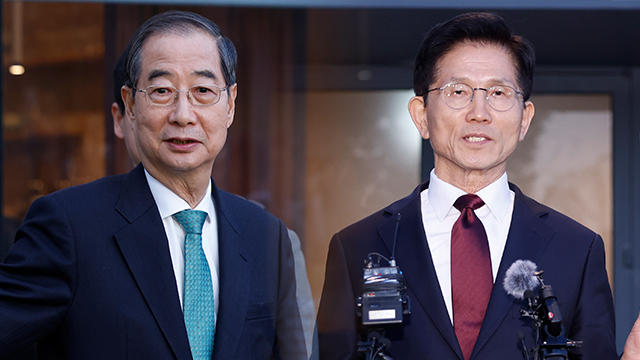
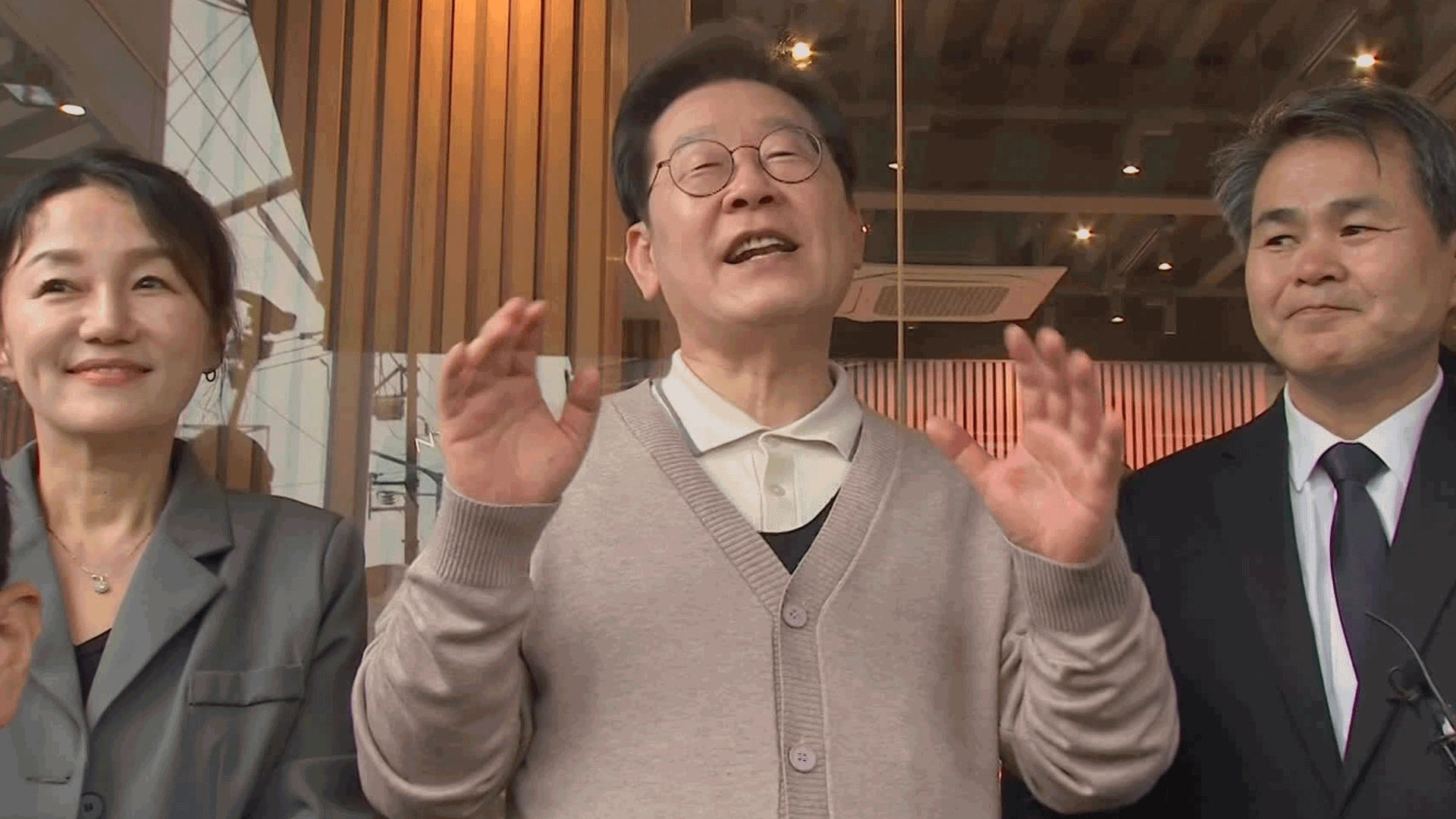
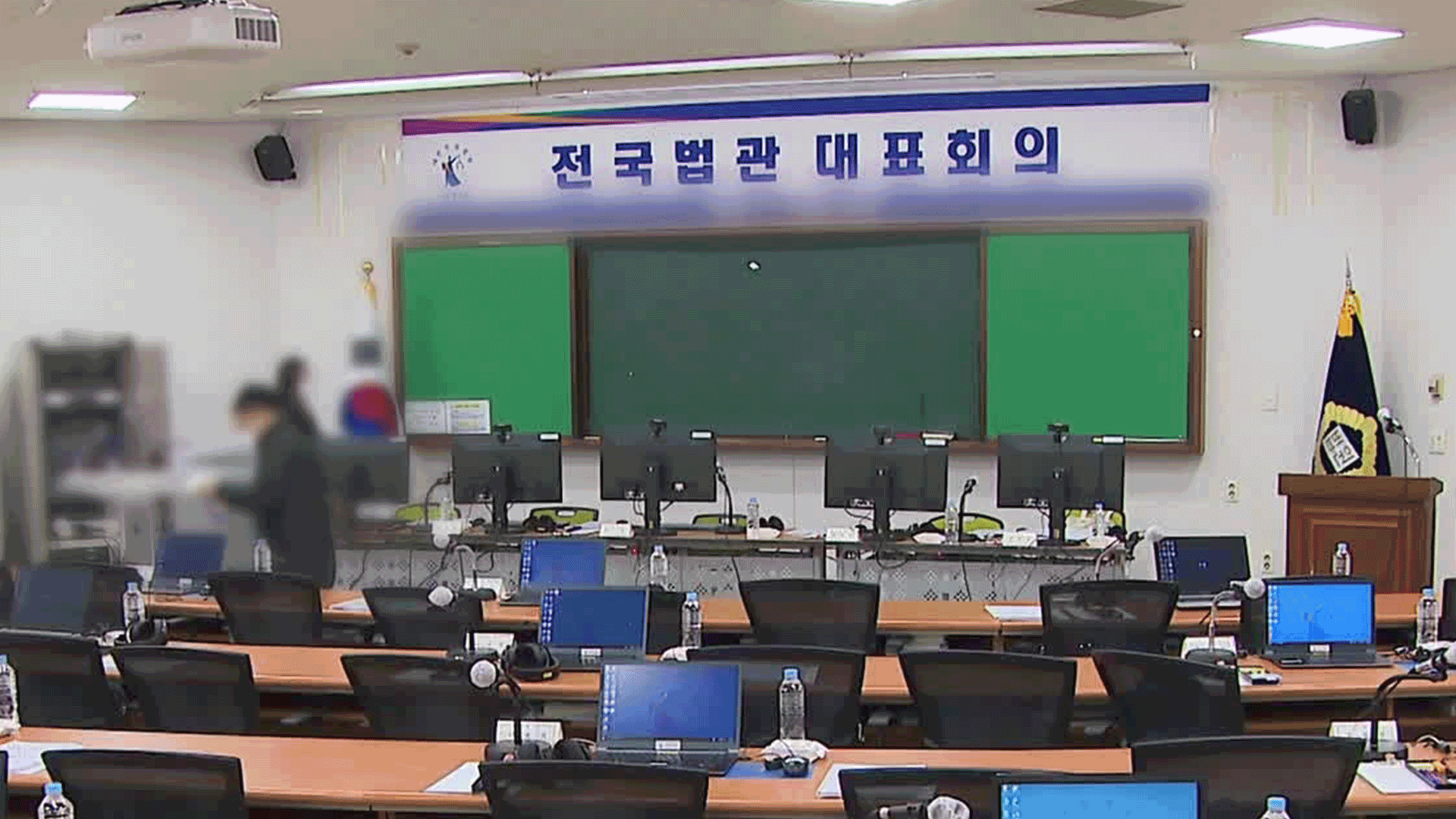

이 기사에 대한 의견을 남겨주세요.